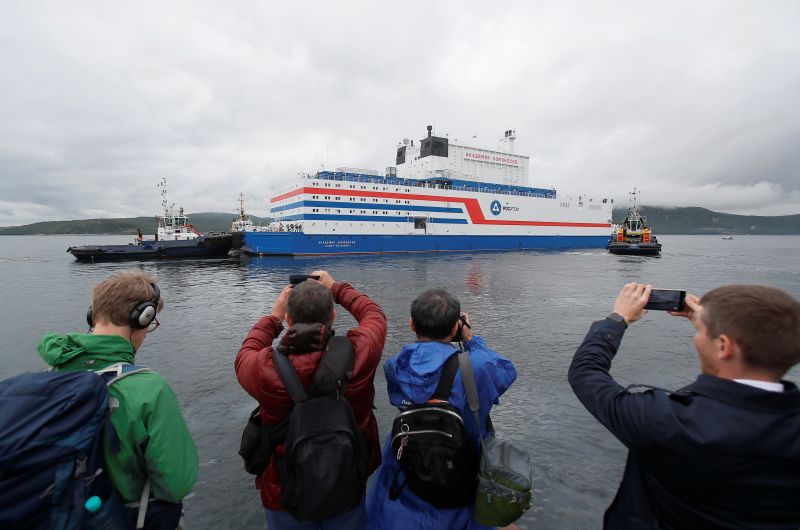Russia's first seaborne nuclear power plant sets sail across Arctic

People take pictures of Russia's floating nuclear power plant Akademik Lomonosov, which leaves the service base of Rosatomflot company for a journey along the Northern Sea Route to Chukotka from Murmansk, Russia on August 23. (REUTERS Photo)
MURMANSK, Russia, August 23 (Reuters): Russia's first floating nuclear power plant set sail on Friday from the Arctic port of Murmansk to provide power to one of the country's most remote regions, sparking environmental concerns.
Developed by the Russian state nuclear company Rosatom, the plant, known as "Akademik Lomonosov", set off on a 5,000 km (3,100 mile) journey through Arctic waters to reach the Chukotka region, which lies across the Bering Strait from Alaska.
The plant, loaded with nuclear fuel, will replace a coal-fired power plant and an ageing nuclear power plant supplying more than 50,000 people with electricity in the town of Pevek.
Rosatom says the plant is safe and can serve as a new power source for the planet's most isolated communities, but environmentalists have voiced concerns over the risk of nuclear accidents.
Greenpeace has called it the "nuclear Titanic".
"We think that a floating nuclear power plant is an excessively risky and costly way of obtaining energy," Rashid Alimov of Greenpeace Russia told Reuters.
He added the unit had not been built with the purpose of fulfilling the energy needs of Chukotka, but rather to serve as a model for potential foreign buyers.
Rosatom did not immediately reply to a request for comment.
The plant's voyage comes at a time of heightened concern over nuclear energy, following a deadly blast this month in northern Russia during a weapons system test that caused a spike in radiation levels in a nearby city.






